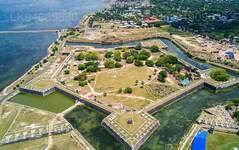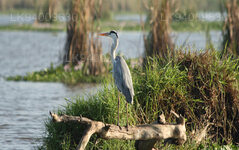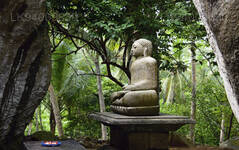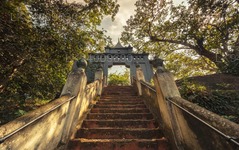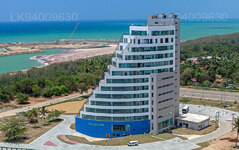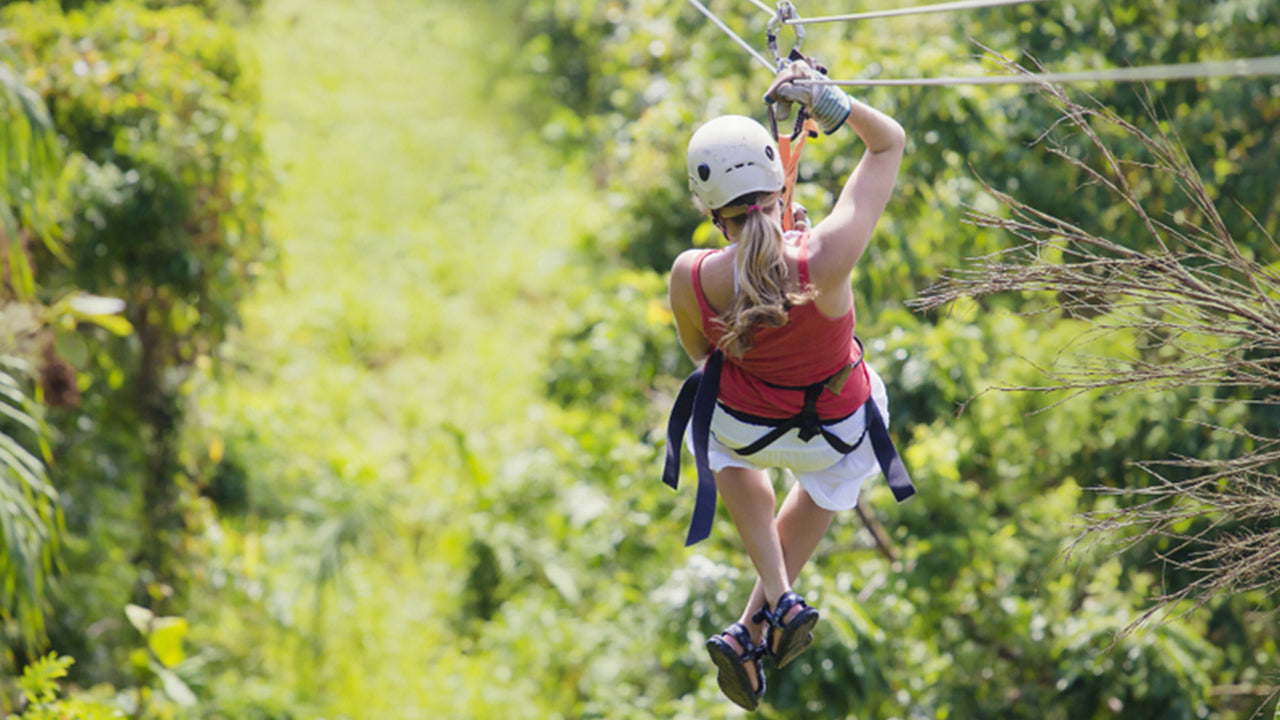Deep South
The Deep South in Sri Lanka mainly belongs to the Hambantota district (an area of 2,593 km²) of which the coastal expanse stretches 151 km from the Tangalle Beach to the Kumana Bird Sanctuary. The Deep South of Sri Lanka is replete with fine tropical beaches, cultural attractions and wildlife reserves. Kataragama, the adobe of God Skanda, the ancient city of Tissamaharama, Sithulpawwa rock monastery, Mulkirigala rock temple and Kirinda Temple are the most visited cultural sites. The Dikwella Beach, Tangalle Beach and Rekawa Beach are the most popular beaches while the wildlife reserves include the Kalamatiya Bird Sanctuary, Bundala National Park, Kumana National Park and Yala National Park.
The prominent towns of Hambantota district include Tangalle, Beliatta, Ambalantota, Tissamaharama and Kataragama.
Hambantota City
Hambantota city located at a distance of 238km from Colombo can be reached via the Colombo – Galle – Matara – Tissamaharama main road.
Hambantota Development Zone, Deep South Sri Lanka
The mega development project at Hambantota is targeted to convert the district into an air-sea trans-shipment hub. Some of the infrastructure includes the Mattala International Airport, Hambantota Harbour, Suriyawewa International Cricket Stadium, an Administrative Complex, Star Hotels, oil refinery and other similar commercial initiatives.
Investment Zone, Hambantota, Deep South Sri Lanka
An Investment Zone of 2000 hectares surrounding the Magampura Mahinda Rajapaksa free port is scheduled to be developed. Magampura is made a free port to attract the investors to the Investment Zone.
The construction of the Matara – Kataragama Railway Line running a distance of 114.5 km began on 5th April 2010 with Chinese aid at an estimated cost of USD366 m and is scheduled to be completed by 2015. Following the launch of Hambantota Development Zone, it is now proposed to extend the Matara-Kataragama railway line to Hambantota.
Deep South Highlights
Hambantota Salt Pans
Hambantota is the center of salt production in Sri Lanka. The city is dominated by shimmering expansive saltpans that stretch along bordering the main road for about 15km. Salt is produced by means of allowing the sea water into the pans called Lewayas that makes the seawater evaporate leaving only salt to be scraped up and collected.
Hambantota Bay Beach
Hambantota Bay beach running in a shape of a crescent consists of sweeping palm-fringed sandy beaches.
Tangalle Bay Beach
Tangalle which is at a distance of 195 km from Colombo at the western edge of Hambantota district, with its lovely palm fringed sandy beaches is one of the main tourist attractions of the southern coast.
Rekawa Beach
Rekawa beach located 10km east of Tangalle is one of the prime locations of Sea Turtles who swim over the oceans into their natal beach for the sole purpose of hatching. Rekawa beach is visited by five different species throughout the year. The best time to see turtles is the period from November to April. Full moon days are the ideal days to view a higher number of turtles and their visibility is afforded by the bright moonlight. Rekawa has recorded 23 turtle sightings in one night.
Kalamatiya Bird Sanctuary
Kalamatiya Bird Sanctuary is situated approximately mid-way between the towns of Tangalle and Hambantota. Access to the Kalamatiya Bird sanctuary is from the village of Hunagama. The brackish waters of Kalamatiya Lagoon fringed with mangroves and salt marshes afford the opportunity to view large flocks of resident and migratory birds of the southern coast. An outrigger canoe trip along the lovely Lunama lagoon is an enjoyable way to view birdlife at the sanctuary. The best time to visit is the period between November and March.
Ussangoda
Ussangoda located 5km east of Kalamatiya Bird Sanctuary is a mysterious plateau bordered by a sheer cliff towards the south end. The cliffs drop a sheer 20 meters to a fine sweep of turtle hatching beaches which are also safe for swimming. The plateau that spreads about 20 acres is of fascinating brick-colored soil that has hardly allowed the growth of vegetation. It is believed the plateau was hit by a meteor in the ancient times.
Bundala National Park
Bundala National Park spreading over an area of 6216 hectares is located at a distance of 274 km from Colombo, between Hambantota and River Kirindi Oya. Though the Bundala National Park’s main attraction is birdlife, it has a considerable population of mammals and amphibians, namely elephants, deer and crocodiles. During the period of September to April, the shallow brackish lagoons of Bundala that make up an area of 2,250 ha, is swarmed with thousands of migratory birds that arrive at the park to seek shelter from the harsh European winter. Bundala National Park is also a refuge for the greater flamingo.
Ruhuna Yala National Park
Ruhuna Yala National Park, the most popular wildlife reserve located at the eastern side of the Hambantota district is famous for its population of leopards. Yala that affords the sightings of elephant is home to the sloth bear, deer, jackal, crocodile wild buffaloes, wild boars and a wide variety of bird species. The gateway to Yala National Park is the ancient southern city of Tissamaharama. Elephants are best seen during the period of October to December. Though Yala spreads over an expanse of 127,000 ha, only an area of 14.000 ha called Block 1 is open to the public.
Mulkirigala Rock Temple
Mulkirigala rock temple is located 16km off the coastal town of Tangalle. The inscriptions carved into the rocks reveal the temple has been a Buddhist monastery for millennia. On each of the terraces in the ascent to the summit of Mulkirigala are cave temples with murals and Buddha statues. The summit of the rock affords breathtaking views of the countryside and the wooded forest.
Tissamaharama
Tissamaharama, the gateway to Ruhuna Yala National Park, surrounded by paddy fields and man-made lakes is a very pleasant town. The Tissamaharama stupa located in the center of the town is one of the largest stupa’s in Sri Lanka.
Sithulpawwa Rock Temple
Sithulpawwa rock temple is located deep within the Yala National Park. The inscriptions found in the rock walls reveal that the history of the Sithulpawwa Rock Temple dates back to a couple of millennia. The main attractions are two temples that sit prettily on rocky outcrops. Within the rocky outcrops are caves once inhabited by Buddhist monks. The last section of the ascent of the rock is supported by iron railings erected upon the rock surface.
Hummanaya Blow Hole at Kudawella, Dickwella
1.1 km off the village of Kudawella is a large expanse of rocky cliffs by the sea. In the middle of the rocky cliffs is a fissure that runs deep into the bottom of the cliff at the sea. Once every 10 – 15 minutes, accompanied with a whistle of whooshing is a fountain of sea-water that shoots up through the cleft over 100 feet at great speed.
Madunagala Hot Springs, Hambantota
Laying in a wide expanse of open country, Madunagala Hot Springs, an isolated hot water spring is located in Madunagala. Recently, the stone enclosures with ponds were built around the spring and set up with changing rooms, toilets and small shops with snacks and beverages including indigenous Ayurvedic drinks such as “Belimal” and “Ranawara.”
Angulmaduwa Brassworkers at Angulmaduwa village, Hambantota
Angulmaduwa is said to be one of the most ancient villages of Brass craftsmen. It is believed that Iron-smelting and steel tempering has been practiced in the village for centuries. Located close to the Mulkirigala Rock Temple, the village of Angulmaduwa affords visitors to witness the traditional brass workers turning out quality traditional brassware. Here is an opportunity to buy fine brass works at fair prices from the craftsmen themselves.
Suriyawewa International Cricket Stadium, Hambantota
Suriyawewa Hambantota International Cricket Stadium set up with 10 Turf Wickets, is the largest Cricket Stadium in Sri Lanka. It was built in the year 2010 in time to host ICC Cricket World Cup in February 2011.
Mirijjawila Botanical Gardens, Hambantota
A 300-acre botanical garden is being set up in Mirijjawila in the Hambantota district of Sri Lanka to assist research on the plants endemic to the dry zone of Sri Lanka. The dry zone of Sri Lanka is known to support a large number of herbal plants. Mirijjawila Botanical Gardens are set to become the center of herbal industry promotion.


